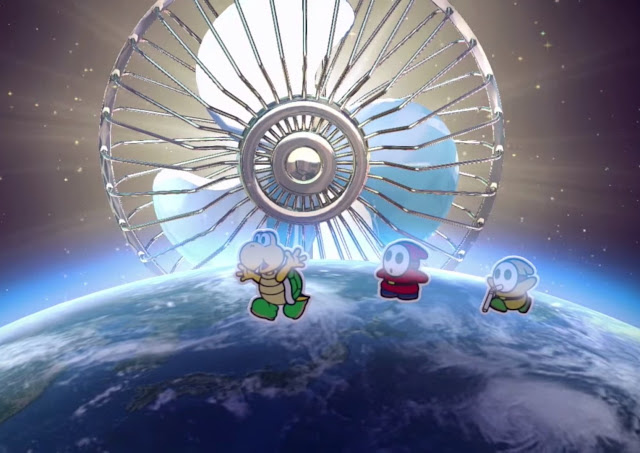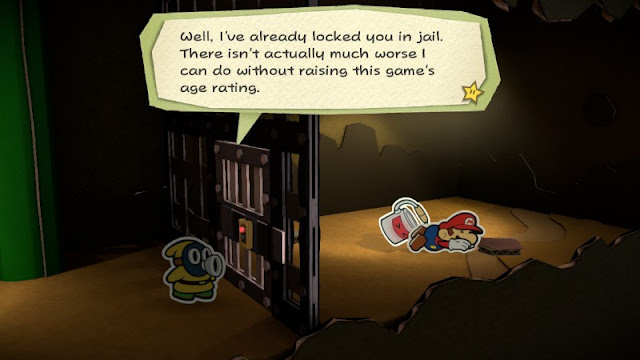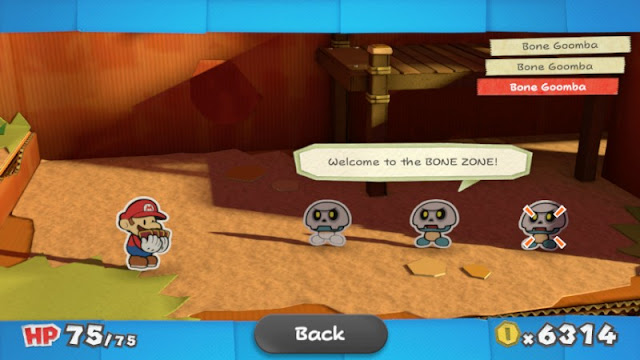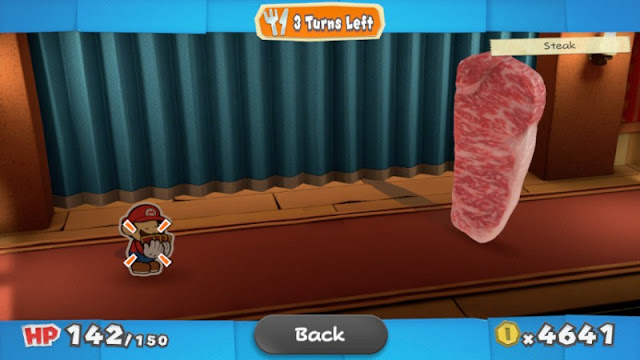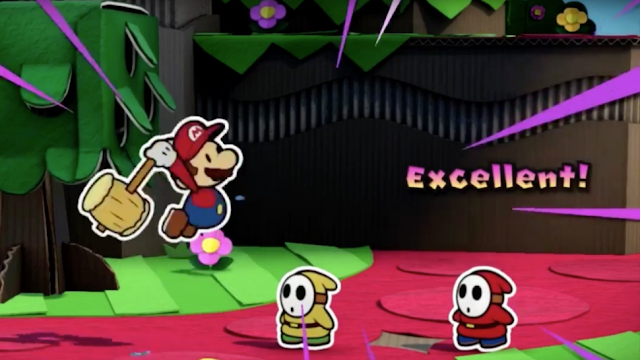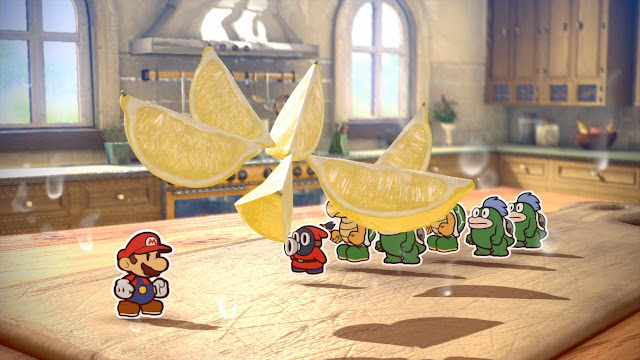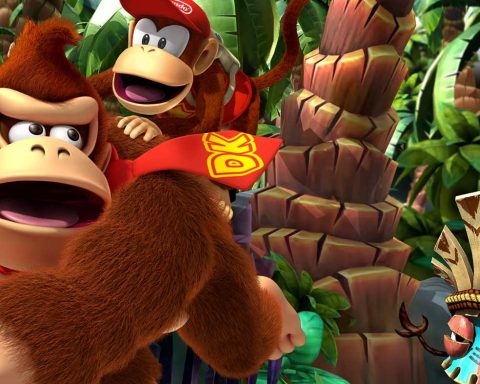The actual story beneath the gags is as paper-thin as the characters, but this is by design. Mario and Peach head to Prism Island upon receiving a strange letter in the mail, where they promptly discover the island is in shambles. Mario promptly befriends an anthropomorphic paint bucket and the obligatory star-shaped MacGuffin hunt follows. Because a certain Koopa overlord is not identified as the culprit, though, there’s this initial sense of mystery. Having an incarnation of Princess Peach with a slightly spunkier persona hanging around creates a very fresh atmosphere. Sadly, these outstanding traits are promptly thrown to the wolves in favour of the tired damsel in distress trope, but to give a backhanded compliment, it’s the probably most ambitious and involved Mario plot Nintendo has attempted as of late.
For starters, exploration is markedly more pleasing here. As I mentioned earlier, Sticker Star had woefully stock backdrops but this sequel takes pleasure in genuinely surprising the player. Early stages start out as inspired renditions of established settings like grasslands, caves, and beaches before getting into less stale themes like theatres, energy plants, and cafés. Atmosphere is delivered in spades and region-specific gags not otherwise possible unfold.
As you might surmise from the title and promotional art, Color Splash also introduces a mechanic unseen in any previous title: painting. Puzzles require the player to paint objects by whacking them with Mario’s trusty hammer. This breathes life into them at the expense of Mario’s paint supply. It’s reminiscent of Super Mario Sunshine’s F.L.U.D.D. in that you’re cleaning someone else’s mess and have to recharge your “fuel”. In this game, though, there’s an emphasis on restoring colour in completely optional locations as well. Your clear rate for any given level is even displayed on the world map; the game really wants Mario to take his time saving the land.
That’s about where the upgrade ends. You still cannot target enemies, which makes fighting multiple foes that require specific cards types simply wasteful to your inventory. You can still end up in unwinnable circumstances occasionally too, particularly when the recurring Kamek character converts all of the player’s cards into a single type that isn’t effective on all enemy types. There are several other frustrating limitations here, but the biggest step backwards is the speed of battle.
The game tries to invoke a sense of overarching progression for Mario over the course of his journey so that combat evolves accordingly, but this plan falls flat on its face. The idea is that you’ll want to increase the paint meter so Mario can amplify the power of his blank cards, so enemies drop experience-like hammers that increase your paint reserves. For a while, this works as motivation. Very quickly, however, you reach a level where paint no longer matters because you can get pre-painted cards for nothing and painting the overworld is optional. It doesn’t help that the levels themselves feature plenty of locations to stock up on paint anyhow. Meanwhile, the growth of Mario’s HP and damage output stem from story progression, not player agency. That’s right – practically speaking, choosing to fight more slows down the ability to fight better.
– Clark A.
Anime Editor

